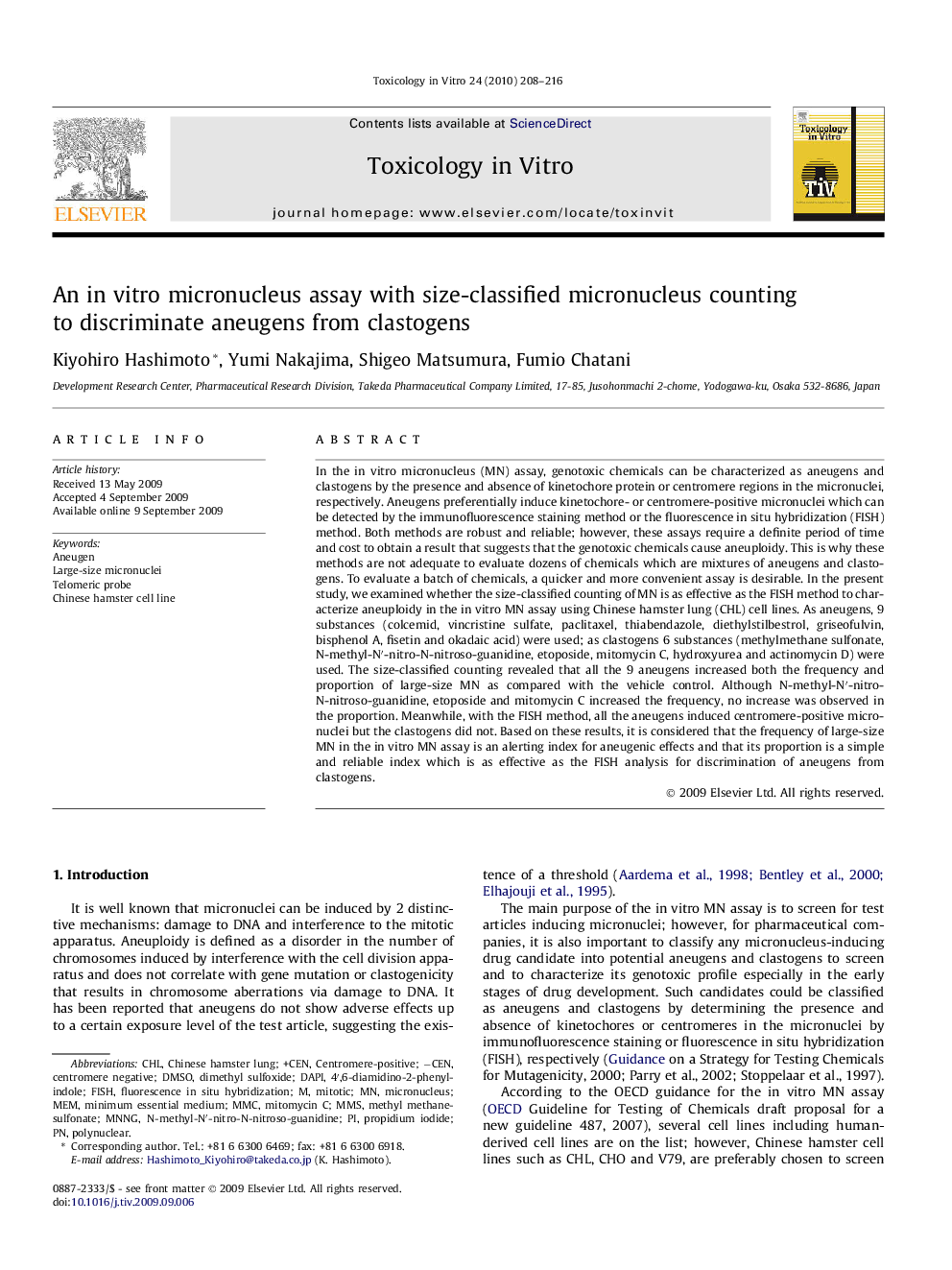| کد مقاله | کد نشریه | سال انتشار | مقاله انگلیسی | نسخه تمام متن |
|---|---|---|---|---|
| 2603546 | 1133823 | 2010 | 9 صفحه PDF | دانلود رایگان |

In the in vitro micronucleus (MN) assay, genotoxic chemicals can be characterized as aneugens and clastogens by the presence and absence of kinetochore protein or centromere regions in the micronuclei, respectively. Aneugens preferentially induce kinetochore- or centromere-positive micronuclei which can be detected by the immunofluorescence staining method or the fluorescence in situ hybridization (FISH) method. Both methods are robust and reliable; however, these assays require a definite period of time and cost to obtain a result that suggests that the genotoxic chemicals cause aneuploidy. This is why these methods are not adequate to evaluate dozens of chemicals which are mixtures of aneugens and clastogens. To evaluate a batch of chemicals, a quicker and more convenient assay is desirable. In the present study, we examined whether the size-classified counting of MN is as effective as the FISH method to characterize aneuploidy in the in vitro MN assay using Chinese hamster lung (CHL) cell lines. As aneugens, 9 substances (colcemid, vincristine sulfate, paclitaxel, thiabendazole, diethylstilbestrol, griseofulvin, bisphenol A, fisetin and okadaic acid) were used; as clastogens 6 substances (methylmethane sulfonate, N-methyl-N′-nitro-N-nitroso-guanidine, etoposide, mitomycin C, hydroxyurea and actinomycin D) were used. The size-classified counting revealed that all the 9 aneugens increased both the frequency and proportion of large-size MN as compared with the vehicle control. Although N-methyl-N′-nitro-N-nitroso-guanidine, etoposide and mitomycin C increased the frequency, no increase was observed in the proportion. Meanwhile, with the FISH method, all the aneugens induced centromere-positive micronuclei but the clastogens did not. Based on these results, it is considered that the frequency of large-size MN in the in vitro MN assay is an alerting index for aneugenic effects and that its proportion is a simple and reliable index which is as effective as the FISH analysis for discrimination of aneugens from clastogens.
Journal: Toxicology in Vitro - Volume 24, Issue 1, February 2010, Pages 208–216